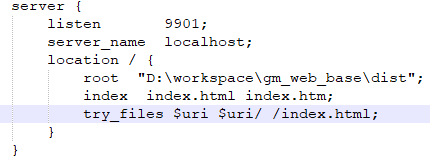可以将文章内容翻译成中文,广告屏蔽插件可能会导致该功能失效(如失效,请关闭广告屏蔽插件后再试):
问题:
I am new to swift (iOS programming in general) and am trying to figure out how to zoom a map out to fit 2 points on the map.
Currently I have
var zoomRect = MKMapRectNull;
var myLocationPointRect = MKMapRectMake(myLocation.longitude, myLocation.latitude, 0, 0)
var currentDestinationPointRect = MKMapRectMake(currentDestination.longitude, currentDestination.latitude, 0, 0)
zoomRect = myLocationPointRect;
zoomRect = MKMapRectUnion(zoomRect, currentDestinationPointRect);
Which does nothing.
Do I have to apply zoomRect to the map somehow?
回答1:
MKMapRectUnion computes and returns a new rect, nothing more. You need to tell the mapView to set its visible area to that new rect:
myMapView.setVisibleMapRect(zoomRect, animated: true)
回答2:
self.mapView.showAnnotations(self.mapView.annotations, animated: true)
回答3:
Use below MKMapView extension-
extension MKMapView
{
func fitAllMarkers(shouldIncludeCurrentLocation: Bool) {
if !shouldIncludeCurrentLocation
{
showAnnotations(annotations, animated: true)
}
else
{
var zoomRect = MKMapRectNull
let point = MKMapPointForCoordinate(userLocation.coordinate)
let pointRect = MKMapRectMake(point.x, point.y, 0, 0)
zoomRect = MKMapRectUnion(zoomRect, pointRect)
for annotation in annotations {
let annotationPoint = MKMapPointForCoordinate(annotation.coordinate)
let pointRect = MKMapRectMake(annotationPoint.x, annotationPoint.y, 0, 0)
if (MKMapRectIsNull(zoomRect)) {
zoomRect = pointRect
} else {
zoomRect = MKMapRectUnion(zoomRect, pointRect)
}
}
setVisibleMapRect(zoomRect, edgePadding: UIEdgeInsetsMake(8, 8, 8, 8), animated: true)
}
}
}
回答4:
For swift 3, iOS 10
Get current location first, and using call back didUpdateLocations to configure the map. Add the following code in your view controller:
@IBOutlet weak var mapView: MKMapView!
private var locationManager: CLLocationManager!
override func viewDidLoad() {
super.viewDidLoad()
mapView.delegate = self
locationManager = CLLocationManager()
locationManager.delegate = self
locationManager.desiredAccuracy = kCLLocationAccuracyBest
if CLLocationManager.locationServicesEnabled() {
locationManager.requestWhenInUseAuthorization()
locationManager.startUpdatingLocation()
}
}
public func locationManager(_ manager: CLLocationManager, didUpdateLocations locations: [CLLocation]) {
if let last = newLocation {
let userlongitude = last.coordinate.longitude
let userlatitude = last.coordinate.latitude
let newDistance = CLLocation(latitude: userlatitude, longitude: userlongitude).distance(from: CLLocation(latitude: YourAnnotation.coordinate.latitude, longitude: YourAnnotation.coordinate.longitude))
let region = MKCoordinateRegionMakeWithDistance(last.coordinate, 2 * newDistance, 2 * newDistance)
let adjustRegion = self.mapView.regionThatFits(region)
self.mapView.setRegion(adjustRegion, animated:true)
}
}
回答5:
-[MKMapView showAnnotations:animated:]
回答6:
As @lveselovsky said
self.mapView.showAnnotations(self.mapView.annotations, animated: true)
works perfectly.
If you are updating your UI before the map has loaded, you can put it in the delegate method like so:
func mapView(_ mapView: MKMapView, didUpdate userLocation: MKUserLocation) {
guard !mapZoomUpdatedOnce else {
return
}
self.mapView.showAnnotations(self.mapView.annotations, animated: true)
self.mapZoomUpdatedOnce = true
}
Boolean value only to make sure once it's updated the first time, it does not get updated again if the user navigates somewhere else on the map :)
回答7:
Swift 3 Fit all annotations in map.
It's the correct way.
func zoomMapaFitAnnotations() {
var zoomRect = MKMapRectNull
for annotation in mapview.annotations {
let annotationPoint = MKMapPointForCoordinate(annotation.coordinate)
let pointRect = MKMapRectMake(annotationPoint.x, annotationPoint.y, 0, 0)
if (MKMapRectIsNull(zoomRect)) {
zoomRect = pointRect
} else {
zoomRect = MKMapRectUnion(zoomRect, pointRect)
}
}
self.mapview.setVisibleMapRect(zoomRect, edgePadding: UIEdgeInsetsMake(50, 50, 50, 50), animated: true)
}
回答8:
Add MKMapViewDelegate and connect mapView delegate in ViewDidLoad
mapView.delegate =. self
func mapView(_ mapView: MKMapView, didUpdate userLocation: MKUserLocation) {
let region = MKCoordinateRegion(center: userLocation.coordinate, span: MKCoordinateSpan(latitudeDelta: 0.5, longitudeDelta: 0.5))
self.mapView.setRegion(region, animated: true)
}


